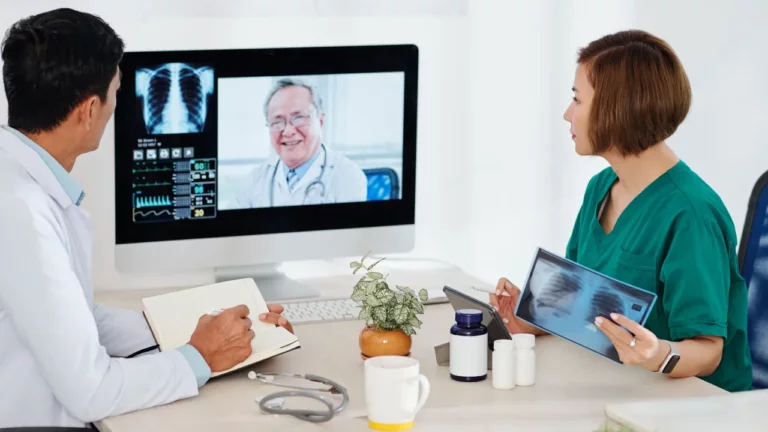In a rapidly evolving healthcare landscape, remote patient monitoring (RPM) has become a game-changer, especially for patients with chronic respiratory diseases like Interstitial Lung Disease (ILD). The success of these programs is not only reshaping patient care but also setting new standards for adherence, engagement, and retention.
A recent study published in JMIR Formative Research highlights the profound impact of remote monitoring on ILD care, showing a 94% adherence rate to home-based spirometry among patients—a testament to the potential of these programs.
This article delves into how RPM is revolutionizing respiratory care and what this means for the future of patient management.
The Growing Burden of Respiratory Diseases
Respiratory diseases, including interstitial lung disease (ILD), chronic obstructive pulmonary disease (COPD), and post-COVID-19 conditions, pose significant challenges globally. According to the Global Burden of Disease Study, chronic respiratory diseases affected approximately 545 million people worldwide in 2017 according to The Lancet.
In the UK alone, an estimated 12.7 million people suffer from respiratory conditions, with ILD affecting more than 150,000 individuals. The complexity and variability of these diseases make continuous monitoring critical for effective management.
The Role of Remote Monitoring in Enhancing Adherence
The study in question enrolled 60 patients across three cohorts—ILD, COPD, and post-COVID-19—who were monitored using a comprehensive remote system that included wearable devices, Bluetooth-enabled spirometers, and smartphone apps. Over 180 days, these patients demonstrated remarkable adherence to the protocol, with ILD patients achieving a 94% adherence rate to weekly home-based spirometry sessions.
This high adherence rate is particularly noteworthy given the challenges associated with home-based monitoring. Spirometry, which requires patients to perform daily lung function tests, can be cumbersome and prone to errors. Yet, the study found that 90.3% of the spirometry sessions were of acceptable quality, meeting the American Thoracic Society’s standards. This level of adherence and data quality suggests that patients are not only willing to engage with RPM but are also capable of providing reliable data over extended periods.
Engagement and Retention: Beyond Just Compliance
While adherence is crucial, patient engagement and retention are equally important for the long-term success of remote monitoring programs. The study revealed that passive data collection methods, such as wearable devices, resulted in superior engagement and retention rates compared to more active tasks like spirometry and app-based questionnaires. On average, patients used their wearables devices for 18.66 hours daily, reflecting a 72.6% weekly engagement rate. This high level of engagement is indicative of the ease of use and low burden associated with passive monitoring.
Interestingly, the study introduced the concept of “protocol holidays,” allowing patients to take breaks from the monitoring tasks without dropping out entirely. This innovative approach significantly improved retention rates, with the ILD cohort showing a 179-day retention at a 0.5 survival probability. Such flexibility in the protocol helps mitigate patient fatigue and enhances the overall experience, making long-term monitoring more sustainable.
The Feasibility and Acceptability of RPM
The success of this study lies not only in the impressive adherence rates but also in the overall feasibility and acceptability of the remote monitoring system. Patients reported high levels of satisfaction with the wearable devices, spirometry, and smartphone apps used in the study.
The majority found the devices easy to use and were willing to continue using them for future health monitoring. This positive feedback highlights the potential for wider adoption of RPM technologies in managing chronic respiratory diseases.
Implications for Healthcare Providers
For healthcare providers, these findings offer valuable insights into the future of chronic disease management. RPM systems, like the one used in this study, provide real-time data that can inform timely interventions, potentially reducing hospitalizations and improving patient outcomes. Moreover, the high adherence and engagement rates suggest that patients are receptive to RPM when it is integrated into their daily routines with minimal disruption.
At DrKumo, we are committed to leveraging the power of remote monitoring to improve patient outcomes, particularly for those with chronic conditions like ILD. Our advanced monitoring solutions are designed to be user-friendly and effective, ensuring that patients can manage their health with confidence.
DrKumo’s technology is designed with the patient in mind, focusing on ease of use and effectiveness. The platform supports continuous monitoring without the burden of complex tasks, allowing patients to manage their conditions from the comfort of their homes. By using advanced wearables and smart devices, DrKumo ensures that patients receive timely care and interventions, which are crucial for improving outcomes in chronic respiratory diseases.
Moreover, DrKumo’s platform is built on a foundation of Federal Healthcare Enterprise Cybersecurity, adhering to VA Directive 6500, FIPS 140-3, and HIPAA regulations. This level of security is essential in maintaining patient trust and ensuring the integrity of health data.
The Future of Remote Patient Monitoring in Respiratory Care
As technology continues to evolve, the capabilities of remote patient monitoring will only expand, offering even greater potential for improving patient outcomes. The evidence supporting RPM’s effectiveness in managing respiratory diseases is compelling, and as more healthcare providers adopt these technologies, the benefits will become increasingly apparent.
Looking ahead, the future of respiratory care will likely involve a more integrated approach, combining patient monitoring with other digital health tools such as telemedicine and AI-driven analytics. This integration will enable a more holistic view of patient health, allowing for even more personalized and effective care.
For healthcare providers, integrating RPM into their practice represents an opportunity to enhance patient care, reduce hospital readmissions, and improve overall outcomes for patients with chronic respiratory conditions. With innovators like DrKumo leading the charge, the future of chronic respiratory disease management is brighter than ever.
Takeaways
The study’s findings mark a significant milestone in the use of remote monitoring for managing chronic respiratory diseases. With a 94% adherence rate to home-based spirometry among ILD patients, it is clear that remote monitoring can play a pivotal role in enhancing patient care. As we move forward, the integration of such technologies into routine healthcare could revolutionize the management of chronic diseases, offering new hope for patients and healthcare providers alike.
The future of respiratory health management lies in the continuous evolution of remote monitoring systems. By building on the successes demonstrated in this study, healthcare providers can work towards a more connected, patient-centric approach to care—one that not only improves adherence and engagement but also fosters long-term health and well-being.
Interested in how RPM can transform your practice? Discover how DrKumo’s cutting-edge technology is setting new standards in chronic care management. Contact us today for a demonstration and see how we can help improve patient outcomes and enhance your practice.
Disclaimer: This blog post draws on findings from a study published in JMIR Formative Research, which highlights the significant impact of remote monitoring on adherence and engagement in managing chronic respiratory diseases. The impressive outcomes from this study emphasize the crucial role that advanced monitoring technologies play in enhancing patient care and outcomes.








